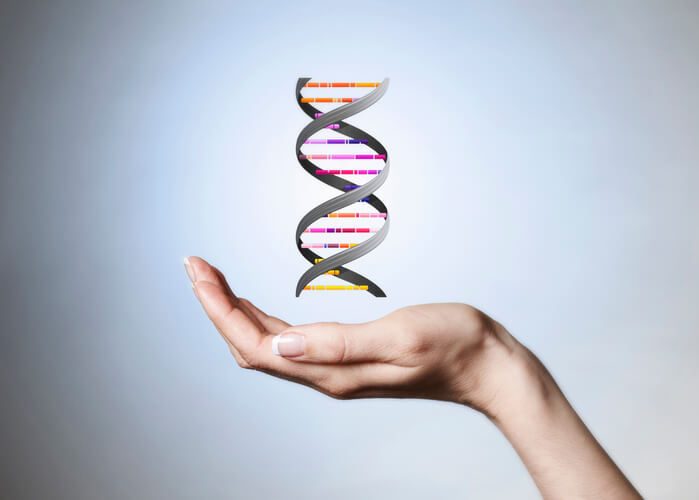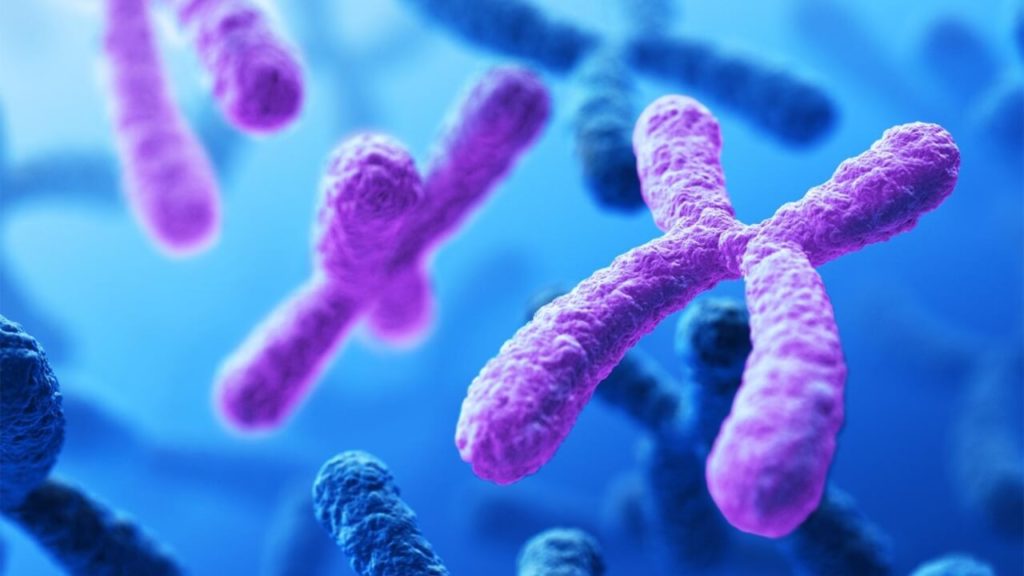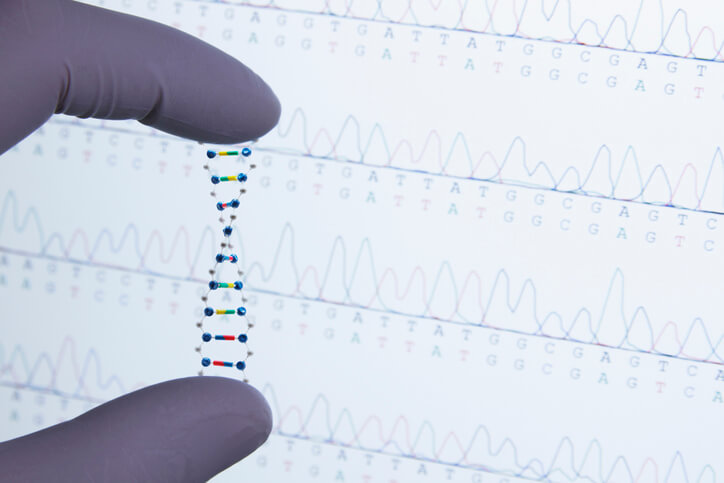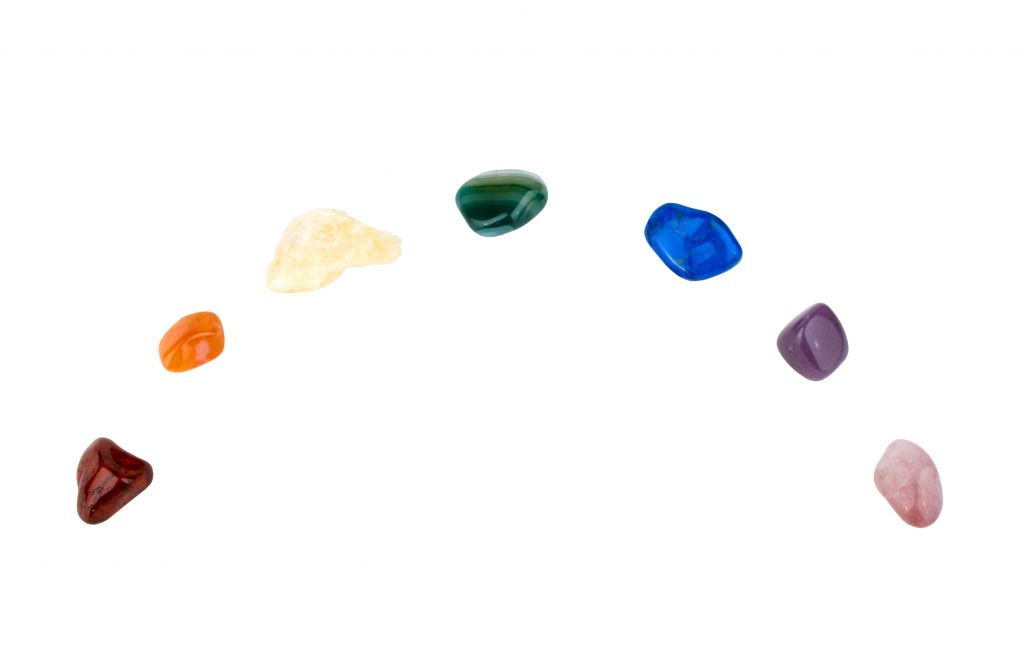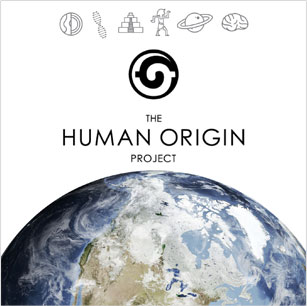The structure of the double-helix DNA model is the language of all life on earth. It encodes and stores the information that parents pass on to their offspring. Its structure allows it to be carefully replicated so that the language of life continues in cells and living creatures.
The discovery of the double-helix DNA model was one of the biggest scientific breakthroughs of the 20th century. To understand genetics, we must understand the structure of DNA.
You may not have known that it did not all happen at once.
The four stages of discovering the DNA Model
It might come as a surprise that Watson & Crick were actually not the ones to discover DNA. They put all the pieces together.
There were many separate steps to the discovery of DNA before the final model was proposed.
1) Nuclei are discovered
Firstly, it needed to be established that there are four major types of cells. (i.e., proteins, fats, carbohydrates, and nucleic acids).
In 1869, Swiss physiologist Friedrich Miescher found what he called “nuclein” inside human white blood cells. It was a landmark discovery because previously it was unknown that cells had nuclei at all. He detected the cell nuclei by finding their chemical properties were unlike any other protein.
The nuclei turn out to be where the DNA is stored in the cell.
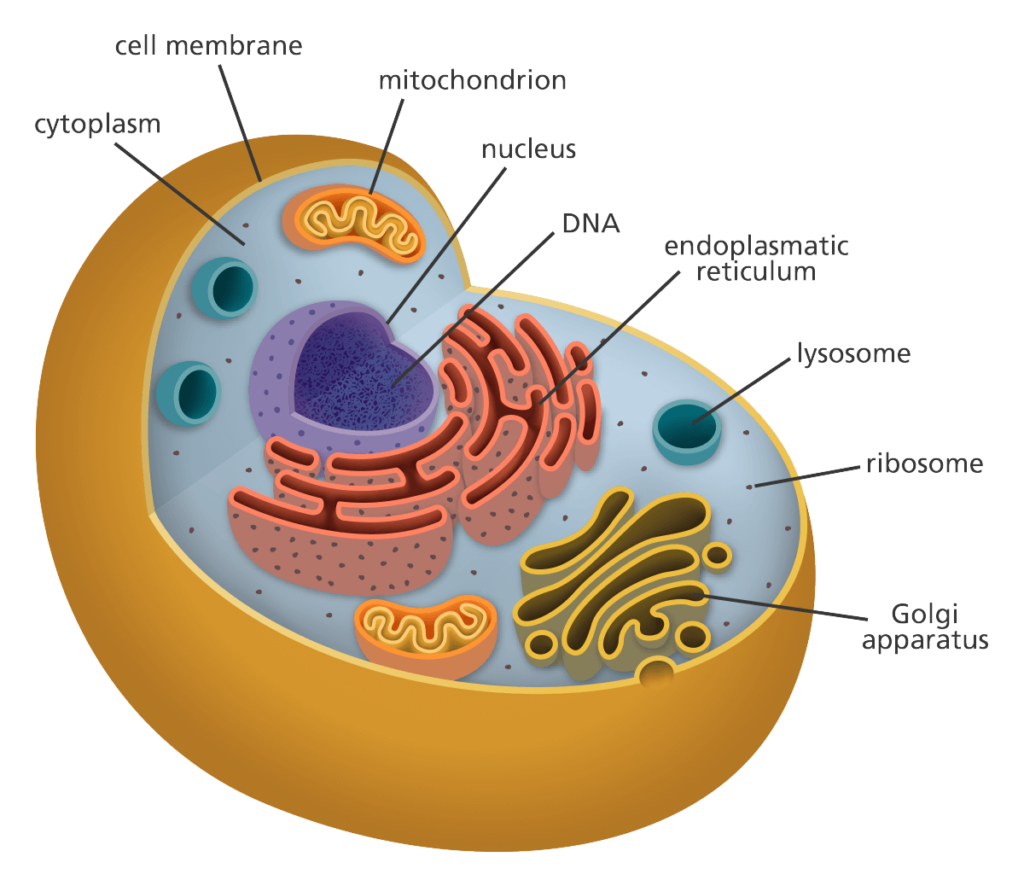
The cell nucleus stores DNA. Source
2) The chemical structure of nucleic acid for DNA was proposed
In 1919, Russian biochemist, Phoebus Levene, proposed that nucleic acids be composed of a series of nucleotides.
Each nucleotide was in turn composed of just one of four nitrogen-containing bases, a sugar molecule, and a phosphate group.
The four bases of DNA were known to be:
- Adenine (A)
- Thymine (T)
- Guanine (G)
- Cytosine (C)

The Structure of the DNA Model with four bases. Adenine (A), Thymine (T), Guanine (G), Cytosine (C). Source
3) The language of the DNA bases was discovered
In 1944, Erwin Chargaff studied Levene’s research and set out to find precisely how DNA transmits information. He suspected there was a ‘language’ of DNA.
He would determine that the four base code of DNA appeared in relative amounts across species.
DNA bases appeared to adhere to a ‘pattern.’ He found Adenine (A) is usually similar to the amount of thymine (T). Then the amount of guanine (G) roughly equals the amount of cytosine (C).
In other words, the total amount of purines (A + G) and the total amount of pyrimidines (C + T)
Adenine (A) = Thymine (T)
Guanine (G) = Cytosine (C)

Relative amounts of the four DNA bases is the language of DNA. Source
4) The double-Helix DNA Model is discovered.
In 1953, James Watson and Francis Crick pieced the puzzles together. Many scientists contributed to Watson & Crick’s discovery of the double helix. All were required to understand the chemical structure of DNA.
They used a technique by Linus Pauling to model chemical bonds and structure. The discovery happened by shifting cardboard molecules around on their desktops, as though putting together a puzzle.
They had found the 3D double helix structure of DNA. It put all the pieces together, in one beautiful model.
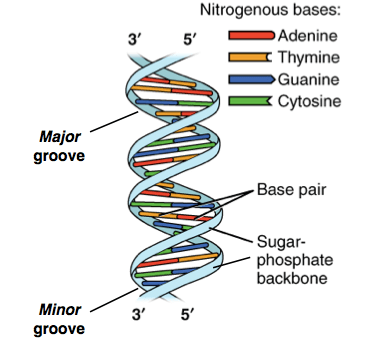
Watson & Crick’s Double Helix DNA Model. Source
The DNA Model & Genetics:
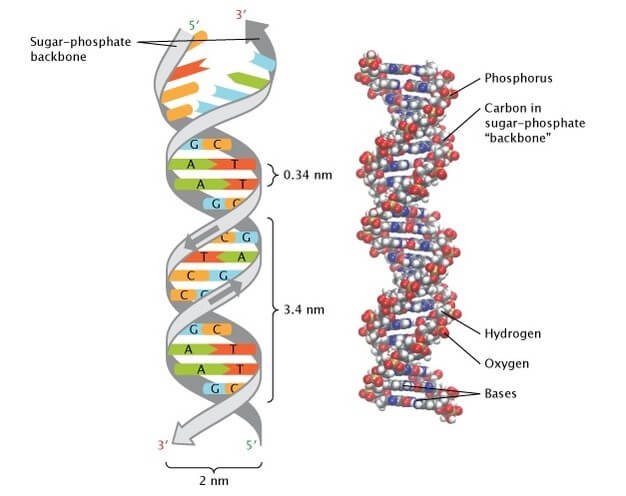
DNA structure can be described with a simple set of rules. Source
What is the name for the structure of DNA?
The structure of DNA is known as a double helix DNA molecule.
It is made up of two strands twisted ladders connected together.
The ladder rungs are where genetic information are stored.
These are sequences of different bases. Overall DNA is acidic, but it has bases inside which balances its pH.
The ladder backbone is the sugar and phosphate molecules.
Watson and Crick proposed the structure of the DNA model as follows:
- Each strand or ladder is a long sequence of four bases, A, C, G, and T.
- The ‘rungs’ or bases always pair together in the same way, A with T, C with G.
- The bases on one strand of the DNA molecule pair with their matching bases on the opposite strand of DNA to form the ‘rungs’ of the DNA ‘ladder.’
- Each base pair is joined together by hydrogen bonds.
- Each strand of DNA has a beginning and an end called 5′ (five prime) and 3′ (three prime) respectively.
- The two strands run in the opposite direction (antiparallel) to each other so that one runs 5’ to 3’ and one runs 3’ to 5’. (The sense strand and the antisense strand)
- The strands are separated during DNA replication
How to make a DNA model at home
A simple way to understand the structure of DNA is to make a handmade model at home.
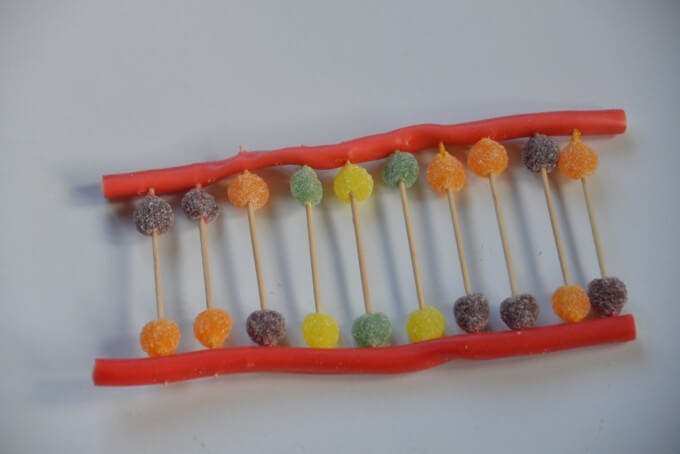
A candy DNA Model with four bases, and sugar backbone. Source
Updates since Watson & Crick
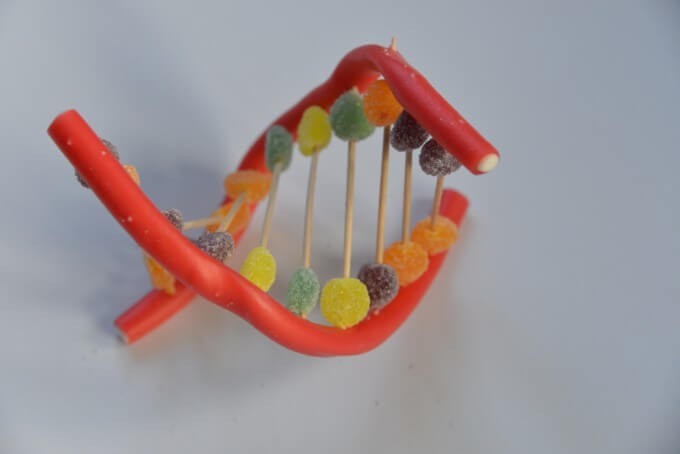
There have been updates to the DNA structure since its discovery.
- Most DNA is right-handed. That holds your right hand out, with your thumb pointed up, and fingers curl around. The thumb represents DNA helix. Your fingers are the sugar-phosphate backbone.
- Since then scientists have found other types of DNA such as A-DNA, B-DNA, & Z-DNA.
- A-DNA & B-DNA have slightly different structures.
- Z-DNA has a left-handed
Conclusion:
The discovery of the DNA model has helped understand how genetic information is passed on.
Now that we have learned the DNA model, it is time to learn its Structure and Function.
Do you have any questions about the double-helix DNA model? Leave them in the comment section below.
References:
- https://www.nature.com/scitable/content/Z-DNA-the-long-road-to-biological-25408
- https://www.nature.com/scitable/content/Molecular-Structure-of-Nucleic-Acids-16331
- https://www.nature.com/scitable/topicpage/discovery-of-dna-structure-and-function-watson-397
- https://www.khanacademy.org/science/biology/classical-genetics/molecular-basis-of-genetics-tutorial/v/alleles-and-genes


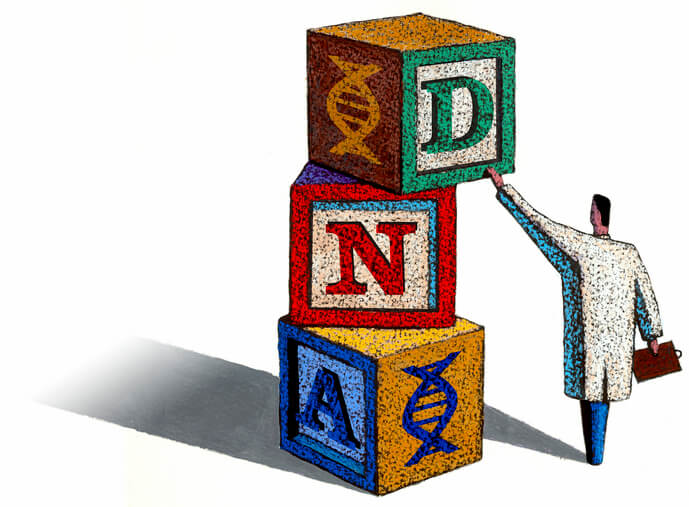 DNA of all life on earth adherers to a double-stranded double-helix model, like two ladders spun around each other.
DNA of all life on earth adherers to a double-stranded double-helix model, like two ladders spun around each other. 